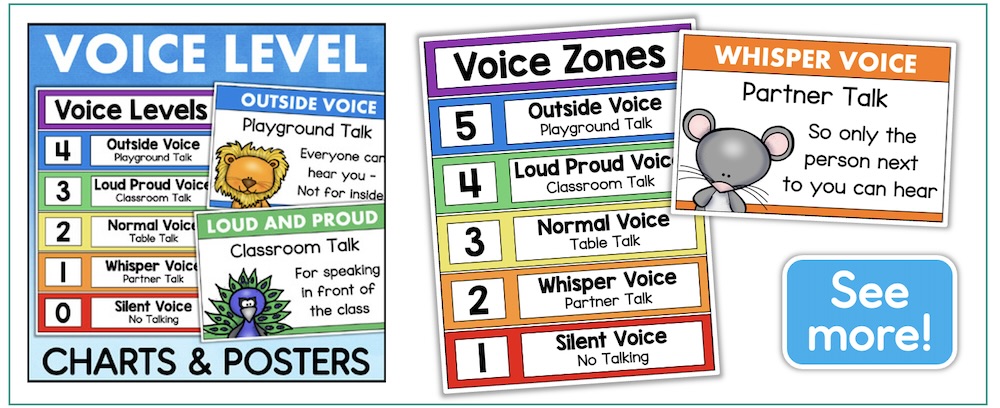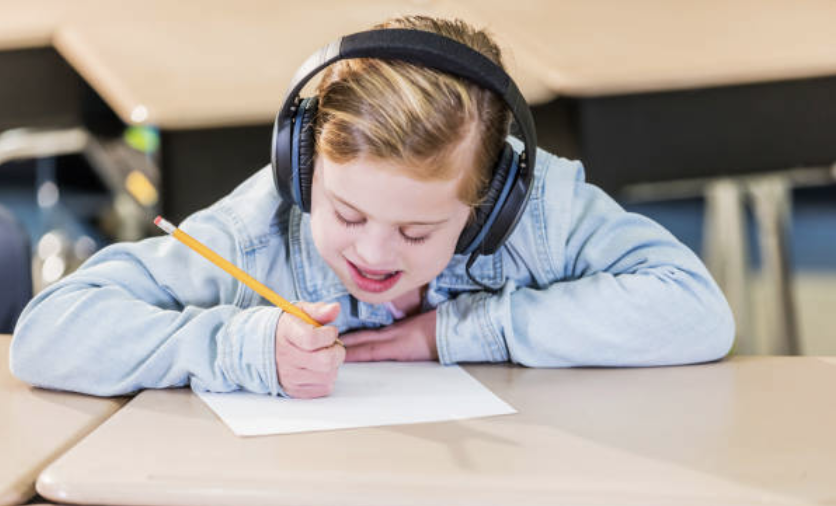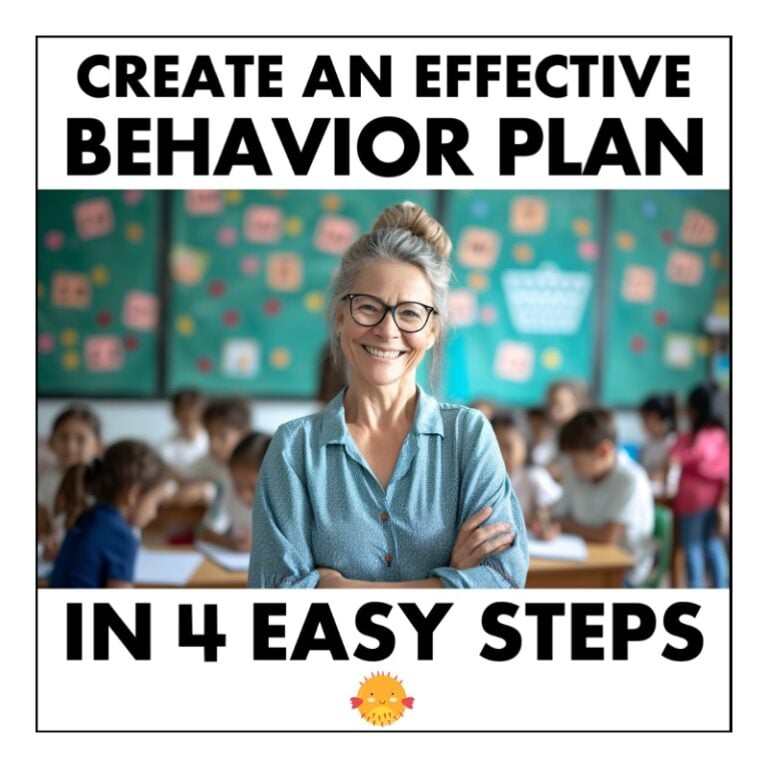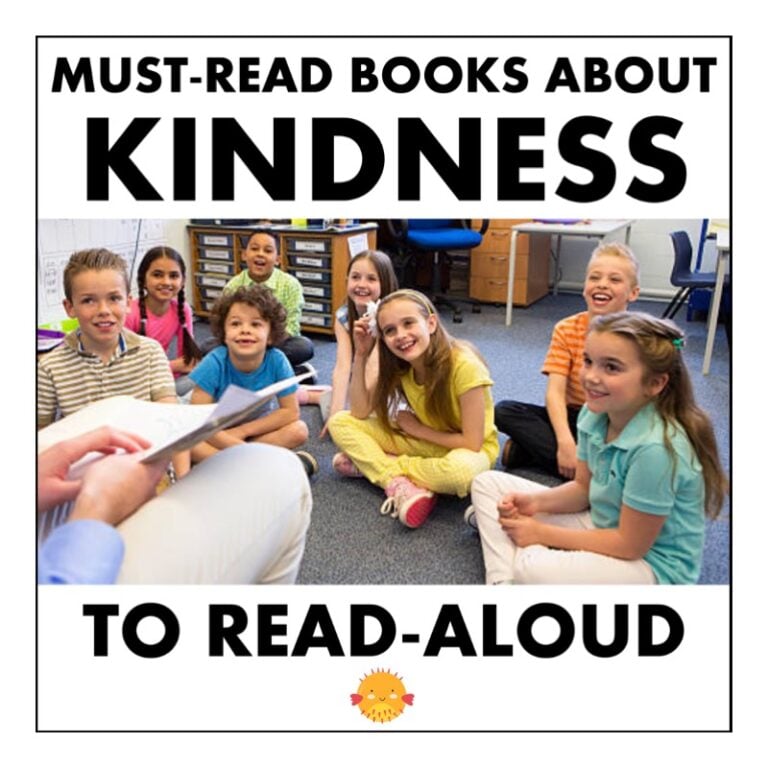
Noisy Classroom? 6 Easy Ways Teachers Can Control the Noise
Is the noise level in your classroom out of control? Even small groups of young children can produce an amazing racket – and 18 or 20 of them can be downright deafening. While some talking and noise should be expected, most students find it difficult to think and work in a noisy classroom environment.

.
Is a noisy classroom okay for kids? How much noise is acceptable?
If you’ve ever worked in an open-plan office, I don’t have to tell how distracting even a little bit of noise can be. This is true for kids as well as adults. But how much noise is too much?
According to the World Health Organization (WHO) and the American National Standards Institute, the background noise in school classrooms should not exceed 35 decibels. Noise that is louder than this makes it difficult to communicate clearly and understand conversational speech.
Another factor to consider is the distraction and sensory overload that are caused by the auditory clutter in a noisy classroom. Many elementary students have trouble concentrating due to shorter attention spans, ADHD, or other learning disabilities. A noisy classroom will certainly divert your students’ attention away from learning.
What if you have special education students with hearing loss or students who are English language learners? Having a quiet classroom is even more important! Listening takes mental effort. Trying to filter out noise to hear a conversation is a challenge for anyone, but especially for people with hearing loss or speaking a new language. When it becomes too much work, they can experience auditory fatigue. Spending this extra cognitive energy affects our ability to remember things and learn.
And what about YOU, the teacher? Having to talk over a bunch of noisy kids can cause vocal fatigue. As if teaching isn’t exhausting enough! A quiet and calm environment, lets everyone concentrate and think clearly – including YOU!
.
What causes a noisy classroom?
There are actually a lot of reasons for excessive noise in the classroom environment besides students’ voices.
There’s the loud ventilation systems, classroom computers creating their own quiet hum, the buzz of fluorescent lighting, and other sounds from individual students like humming, tapping pencils, and sliding chairs in and out. Then there’s the teacher’s voice, of course, that must be louder than normal to be heard above everything else. Combine all of that with the poor classroom acoustics found in most schools and you have the recipe for a very noisy classroom.
At my school building, classrooms are arranged in pods of four with a shared workroom in the middle. It’s a great arrangement except for one thing – each pair of classrooms shares a front door, hallway, and bathrooms. That means all the noise from kids coming in and out, toilets flushing, and sinks being used can be heard in both classrooms – all day long. So having noise IN the classroom, on top of all that, can be a real problem.
Hopefully, the situation at your school isn’t quite that bad. But no matter what, keeping noise levels down in the classroom is something most teachers strive for. So how can you get there?
.
How do you deal with a noisy classroom?
With 20 or so kids confined to a small area, things can get really loud, really quickly. Rather than waiting for the noise level to build before taking action, it’s best to be proactive.
Here are some great ways you can do that:
✅ Set High Expectations and Model
Beginning on the very first day of school, it is essential to set classroom expectations. Most of us already do that for things like classroom rules and procedures. Expectations for how students sound in your room should also be part of your classroom management plan.
Clearly explain what noise levels are acceptable for different activities. Be sure to include examples and non-example. Model and role play – especially with younger students.
As adults, we understand what a whisper is, but little kids might not. They have to be taught and shown. This is particularly important for young readers who often vocalize when reading to themselves. They can’t help this. It’s a developmental stage. They need to hear themselves. So teach them how to do it correctly. (Have you tried using whisper phones?)
Giving students the opportunity to practice your voice level expectations and get positive reinforcement will help them be successful.
.
✅ Provide Visual Cues
As you are teaching your students how you want the room to sound at various times, introduce some visual aids and reminders. This is really important. Some kids, and adults too, are visual learners and need that piece to understand. Having clear visual cues also means you can redirect the class without adding to the noise level yourself. Imagine trying to yell over an already noisy group to get them to quiet down. Totally ineffective!
A better idea is to use a noise meter or noise levels chart in the room and teach students how to use it. A noise chart is usually numbered with descriptors next to each. Explicitly teach your students what each number means and be sure to practice and model. Once they learn your system, it’s super easy to say, “For this activity, we will be at Level 2.” And if the noise levels grows, you can just point to the chart as a reminder.
➡️ MUST DO – Hang your voice level chart so it can been seen throughout the entire classroom.

.
✅ Classroom Noise Monitor
Young students have a really hard time self-monitoring. That takes time and maturity to develop. Sometimes a quiet room will slowly get louder and louder without students even realizing it. One way to help with this is to use a noise monitor. There are quite a few available in the app store.
Here’s one you can use through your browser that doesn’t require an account. You can set the volume level and students will be alerted if their noise goes above that level: Sound Level Widget
.
✅ Create a Structured System for Group Work
When students work together in groups, you can be sure the noise level in your room will go way up. But a noisy classroom can quickly turn collaborative activities into a chat-fest. A great way to control that is to provide a well-defined structure during cooperative learning activities. Two of my favorite strategies are having a designated speaker and using a talk light.
A designated speaker is just what it sounds like – one person who does the speaking for the group. For example, you might play a review game with your class split into small groups. Instead of everyone in the group shouting out their answer, there should be a designated speaker. That’s the only person allowed to call out the answer.
If your students are in discussion groups, assign each person a number. Then give them each a turn to speak – all the number ones can talk. Then the number twos and so forth.
Have you seen those little battery operated tap lights? They are an amazing tool for noise control in the classroom by creating structure during group discussions.
In small groups, give each group one light. When you tap their light, it’s their turn to talk or give an answer. They can also pass it around within the group so only one student is talking at a time.
During whole group activities, tap lights are fantastic! Pass one around the circle to give each student a chance to respond or contribute. Or after one student answers, let them pass the light to whoever they want to be the next speaker.
.
✅ Use Quiet Music
Playing soft, gentle music during independent work times is surprisingly effective at keeping loud noise levels at bay. My students have grown to love quiet music time. So much so, that they ask for it if I forget. Quiet music is great to use during small group activities as well. It seems to calm everyone and gives the highly auditory kids something to listen to as they work (instead of their own voices).
You can find all kinds of lovely work music on youtube. Here is a playlist with my favorites: Classroom Work Music
.
✅ Create a Noise Free Zone
Sometimes there’s going to be more noise than usual in the classroom. Group projects, hands-on activities, and anything that seems especially fun can get loud. That’s okay and you should expect that.
But there are always a few kids who just don’t work well in a loud environment. This is especially true for students with ASD or auditory processing issues. And hey, some people (like myself), just think better when it’s quiet. You should give those students the option to escape the noise.
- Designate a spot in the classroom as a quiet area. It should be as far away from the whole class as possible and only students who want to work with minimal talking and sound should be there.
- Provide headphones so kids can block out as much noise as possible – if they want to.
- Monitor for rule breakers. Don’t let a loud child invade their quiet space.
.

.
Using these strategies consistently will teach students to control their noise level in the classroom and it pays off in so many ways. Think about your next field trip or a classroom visitor coming in to speak. Nothing is more embarrassing than a noisy classroom that you can’t control. How nice would it be to know your students will maintain a respectful volume when talking without constant reminders?
.



